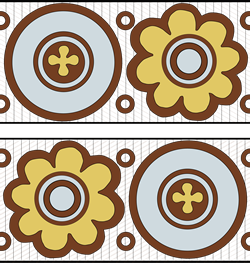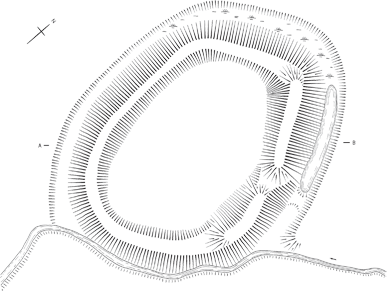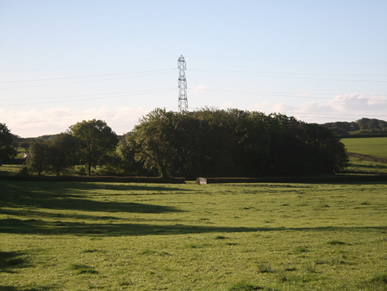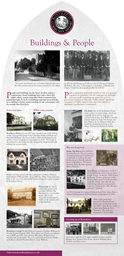
Early Bonvilston
Cyfod Cynnar Tresimwn
Not very much is known about Bonvilston before the Normans arrived. Some artefacts have been found that point to people being in the area we know as Bonvilston before then. A flint tool was found that dates to the Bronze Age (3200-600 BCE). The burial mound at near by Tinkinswood also indicate the prescience of people at this time.There is the remains of an old Orchard, believed to have been there in Roman times.
In 1066, after William of Normandy's victory at Hastings, Marcher Lords were set up along the Welsh border to keep the Welsh at bay. By the middle of the 12th Century a castle ringwork was built in Bonvilston and put in the charge of Simon de Bonville. It was part of a ring of wooden forts that protected the castles at Dinas Powis and Sully. So Bonville's Town or Tresimwn in Welsh was planted and it grew from there.

The 16th Century Historian Rice Meyrick in his "Booke of Glamorganshires Antiquities" says of the de Bonvilles:"Symon Bonvill was Lord of the Mannour of Bonvilstone, of him so named, for shortness of speech ' Bolstone.' Some part thereof remayned in the heire male called Myryk Bonvill at the time of the Lord Spencer's Survay ; the rest given to the house of Morgan. And before the Suppression, all apperteyned to the same house. The house of Bonvill was builded in a Wood by South Bolstone, and was envirouned with a mote ; part of the decayed walls I have seen carryed to build other houses, and, in a Lyme kiln there made, some part of the Walls were burned, to lyme ground withall."

Church records show that the first incumbent in St Mary's was one Richard, Priest of Bonvilston who arrived in 1198 and was replaced in 1201. It is likely he was a monk, possibly from the nearby monastery at Llancarfan, and it is significant that his tenure began in 1198, the same year as the Siege of Acre by Richard I . It is believed that most of the churches in the area were built as Templar Chapels to raise funds and soldiers for the crusades which began in 1095.
The only thing we can say for certain is that there was a church here in 1198 and it was dedicated, according to its alignment to sunrise, to The Feast of the Assumption of St Mary. All that remains of the Norman church is the Tower and the chancel arch. However the church and the de Bonville Manor have another connection. The Abbey of Margam records show that during the mid 13th century the de Bonvilles were selling off their land to the church. The records show sales by John de Bonville, Sussanna de Bonville, her son William, Cecilia de Bonville and her son Adam. Again the major histories of the church were affecting local life.



